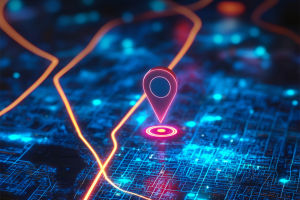Have you ever wondered how artificial intelligence (AI) might transform the way photographers create art? The fusion of AI with photography is no longer a futuristic idea—it is happening now.
This blend is opening doors to new creative expressions, redefining what it means to capture and create images in the 21st century. Let's dive into how AI is reshaping photographic art and what exciting possibilities lie ahead.
The Role of AI in Photography Today
AI technologies are increasingly integrated into photographic tools—from smart cameras that adjust settings automatically, to software that enhances images with astonishing precision. AI algorithms can now analyze scenes, improve lighting, remove noise, and even suggest compositions. More advanced systems generate entire images based on textual or visual input, pushing photography beyond traditional boundaries.
This makes photography more accessible to beginners and provides professionals with innovative tools to enhance creativity and efficiency.
Creative Collaboration Between Human and Machine
One of the most fascinating aspects of AI in photography is the collaboration between human intuition and machine intelligence. Photographers bring personal vision, emotions, and cultural context, while AI offers data-driven insights and computational power.
For example, AI can assist in editing by identifying the best shots in a series or suggesting artistic filters that align with the photographer's style. This partnership allows artists to experiment with new aesthetics and storytelling methods.
Conceptual Expansion Through AI
AI also encourages photographers to explore conceptual photography in new ways. Generative adversarial networks (GANs) can create surreal or abstract images that challenge our perception of reality. Photographers can use these tools to visualize ideas that were once difficult to realize, blending photography with digital art.
This expansion blurs the line between photography as documentation and photography as conceptual art, enabling deeper emotional and intellectual engagement.
Challenges and Ethical Considerations
While AI offers exciting opportunities, it also raises important questions. Who owns an AI-generated image? How do we define authenticity when an image is heavily altered or created by machines? Moreover, overreliance on AI could risk diminishing the photographer's unique voice and craftsmanship.
Ethical use of AI in photography requires transparency about the role of technology in the creative process, ensuring that both artists and audiences understand what they are experiencing.
Impact on the Photography Industry
AI is transforming the photography industry, from commercial shoots to social media content creation. Automated editing tools speed up workflows, while AI-driven image recognition aids in organizing vast photo libraries.
For marketing and advertising, AI can tailor visuals to target audiences more effectively, creating personalized experiences. However, this evolution demands that photographers continuously update their skills and embrace technology as part of their toolkit.
The Future of AI and Photography
Looking ahead, the integration of AI with photography will deepen. We can expect more intuitive AI assistants that understand artistic goals and provide customized suggestions. Interactive photography experiences using augmented reality (AR) and AI-driven virtual environments may also emerge, offering immersive storytelling.
As AI learns from vast amounts of visual data, it might even help revive lost photographic techniques or suggest innovative approaches inspired by global art traditions.
Conclusion: Embracing the Fusion
AI and photography together are more than just tools and pictures—they represent a dynamic dialogue between technology and human creativity. This fusion challenges us to rethink authorship, aesthetics, and the essence of art itself.
What do you think about AI's role in photography? Are you excited or cautious about this new creative frontier? Share your thoughts and experiences—your perspective enriches this ongoing conversation about the future of photographic art.


